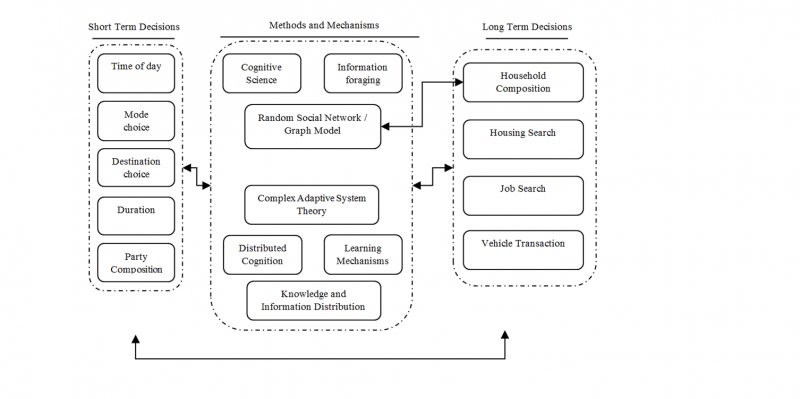Macroscopic parking dynamics modelling and optimal real-time pricing considering cruising-for-parking
We quantify and assess the effect of cruising-for-parking by developing a neighbourhood-scale macroscopic parking dynamics model. Given limited parking supply, cruising-for-parking is explicitly modelled as well as the flow interactions between on- and off-street parking operations. The model is built upon system dynamics of different families of vehicles using macroscopic traffic flow theory. Each family of vehicles features a unique driving state. For example, all the vehicles currently cruising for parking belong to the same family with the state being “cruising”.
To reduce parking congestion and improve the network performance, two real-time parking pricing strategies are developed and compared where the price is of a pay-per-entry type. The first strategy is a feedback or reactive pricing scheme driven by the parking occupancy. Assuming that parking occupancy data are available in real-time through installed road-side units such as cameras or sensors, we could utilize such data and apply trial-and-error which is the core of the feedback scheme. The second strategy is a model-based predictive or proactive pricing scheme that explicitly minimizes the expected aggregate cruising delays. At the beginning of each time interval, an optimization problem is solved for a finite time horizon to obtain the optimal price for this interval.

For more information please contact:
Assoc. Professor Taha Hossein Rashidi
E: rashidi@unsw.edu.au
Full paper:
Gu, Z., Safarighouzhdi, F., Saberi, M., & Rashidi, T. H. (2021). A macro-micro approach to modeling parking. Transportation Research Part B: Methodological, 147, 220-244. doi:10.1016/j.trb.2021.03.012




